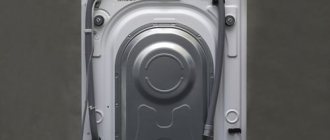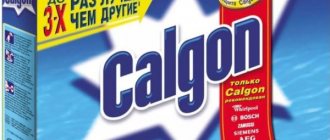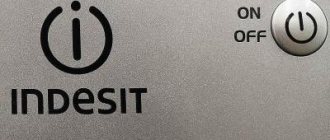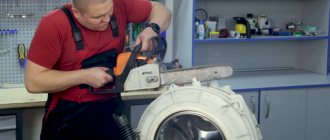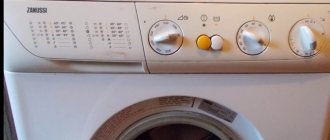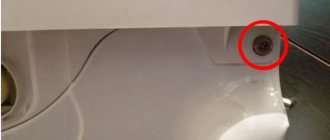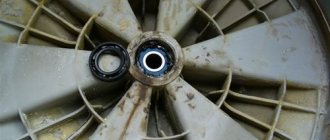This article is devoted to the topic of independently replacing the heating element (heating element) of a washing machine without calling a technician, and will also help you choose a replacement heating element.
Today, washing machines are available not only in every apartment of a multi-storey building, but are also excellent household helpers in villages and towns. From luxury, they have long turned into an indispensable attribute of the comfort of life of a modern person, which is available to everyone.
Of course, smart home appliances relieve you of some worries, performing their work flawlessly and as quickly as possible. Unfortunately, a washing machine, like any other equipment, tends to break down. Often, malfunctions and malfunctions may not even be the fault of the washing machine, but due to external factors affecting its operation.
In any units, even the most expensive ones, the weakest point is the heating element (heating element). It is quite sensitive to water quality and operating conditions. Hard water with various impurities will quickly lead to excessive scale formation on the surface of the heating element, which will render it unusable. Also, the heating element very often fails due to voltage instability in electrical networks.
Of course, if malfunctions occur, you can continue washing, but it is unlikely that anyone will be satisfied with its quality due to cold water.
How to check the heating element of a washing machine
It is recommended to check the heating element of the washing machine at the first suspicion of a breakdown. The best thing that can happen is that you wash your clothes in cold water, and the worst thing is that the machine can burn the wiring, give you an electric shock, or cause a short circuit that can lead to a fire. We will try to tell you what signs you can use to detect a malfunction, as well as how to independently check the heating element for functionality.
Signs of breakdown
Regardless of the model of your washing machine, be it Indesit, Ariston or Bosch, you can independently understand that the heating element has failed.
The main signs of a heater malfunction:
- After starting the wash, the water in the machine does not heat up. When you run a higher-temperature wash cycle, you may find that the water remains cold. In this case, we can confidently say that the heating element is not functioning. If the wash reaches the water heating stage, the machine should stop the process and give an error. At the same time, in modes that do not require heating of water, the machine can operate normally and not generate errors.
- Before the process of heating water begins, the machine “knocks out the circuit breaker” - turning off the fuse that protects the electrical lines that go after it from combustion. As a rule, this happens 10-12 minutes after selecting and starting the washing mode. The most common cause is a short circuit of the coil located inside the heating element.
If you find one or more of the signs listed above, most likely your heating element is faulty, poses a danger and requires replacement.
Checking the heating element without measuring instruments
If you do not have a so-called measuring device, it is possible to diagnose the heating element for operability.
- There may be black dots on the heating element body that appear during breakdowns. Sometimes scale interferes with diagnostics using this method, so it is necessary to clean it in order to accurately determine the malfunction. To remove scale, just soak the element in citric acid.
- Pay attention to the electricity meter. Turn on the washing machine and select a program with a high temperature and when it should work for heating, look at the meter readings. The heater requires a lot of power, so if the meter continues to spin without much change, most likely the heating element is not working. If the meter starts to move more, it’s fine.
- If you find external damage to the water heater, such as swelling, scratches or cracks, you can safely look for a new heating element.
- Another test option can be a test lamp, which is used by electricians.
Checking with a multimeter
Before you check the heating element with a multimeter, you need to know how to ring it correctly and what data is considered correct.
To calculate resistance, we will rely on:
- U – voltage 220V, which is supplied to the heating element;
- P is the power of the heating element, which can be found in the instructions, packaging or manual for using the machine.
Next you need to calculate the resistance: R= U²/P. If the resulting number matches the one that will be shown on the tester, then the heater is working.
Now let's move on directly to testing with a multimeter. First unplug the washing machine from the power supply and be vigilant. Disconnect the entire wire and turn on the resistance measurement mode in Ohms on the tester, setting the selector to 200 Ohms and connect the tester wires to the terminals of the heating element.
As a result we get:
- You should see readings on the tester that are close to the calculated figure;
- If the tester reproduces one, then there is a break inside the structure and the water heater requires replacement.
If the multimeter shows 0, then you are experiencing a short circuit. This element needs to be replaced.
Now you know how to check the heating element of a washing machine with and without the device.
Options for possible marking designations for tubular electric heaters:
Heating element – 188 A 13/3.0 T 220 F1
- The unfolded length of the heater is 188 cm.
- The length of the contact seal, which has the letter designation (A), is 40 mm.
- Heater diameter - 13 mm.
- Rated power - 3 kW.
- The value of the medium “T” according to GOST corresponds to the medium “Air and other gases, including mixtures of gases” and the material is stainless steel.
- Rated voltage - 220 V
- F1 - classic straight shape.
Cartridge heater TENP 16.9,9.270.230.500.350
- Product length - 160 mm.
- The diameter of the product is 9.9 mm.
- Power - 0.27 kW.
- Wednesday—L—casting molds and molds. Material: carbon steel.
- Voltage - 230 V.
- Wire length - 500 mm
- Heat resistance of the wire - 350 °C
The description of the technical characteristics of heating elements can be expanded and contain additional information about the heater, allowing you to get to know it better.
Heating element – 42 A 13/2.0 J 220 (G1/2; R73; F2)
- Tube length - 42 cm.
- The length of the contact in the termination is A, which is equivalent to 40 mm.
- Pipe diameter - 13 mm.
- Power - 2.0 kW
- The working medium is J, that is, water or a weak solution of acids. Material: stainless steel.
- Voltage - 220 V.
- Outer diameter of the fitting - G 1/2
- The bending radius of the heating element (mm) is R 73.
- The shape of the product is No. 2 or U-shaped.
Heating element 95 C 13/1.25 T 220 (m/o 69; F2)
- Length - 95 cm
- Embedment length —С, 100 mm
- Tube diameter - 13 mm.
- Power - 1.25 kW.
- Medium - “T” stands for air and other mixtures of gases. Material: stainless steel.
- Voltage - 220 V.
- Center distance -69 mm
- Product shape: F2 or “horseshoe”
When marking a block of heating elements, other designations are added to the inscription: SEV (for water) and SEM (for oil). Special connection holes may be located on the flange. The nature of the thread is displayed in the following form: metric - M, inch - G.
An example of decoding the marking of a heating element block:
SEV 10 J 430 (heating element 430 V 8.5/ 3 J 220) G2
- Power - 10 kW
- Medium: water, weak acid solutions. Material: stainless steel.
- Length - 430 mm
- The length of the contact rod is 65 mm
- The diameter of each heating element is 8.5 mm
- Power of one heating element - 3.33 kW
- Voltage - 220 V
- Flange size - G2
Replacing the heating element in a washing machine
We will consider the most common option for replacing the heating element in a washing machine - when it is located behind the drum. To do this, follow several steps:
Step one.
Drain the remaining water from the drum by opening the bottom cover on the front panel of the case and remove the plug. Be sure to place a low container for draining water, otherwise it will spill on the floor. To completely drain the residue, we recommend tilting the washing machine slightly towards the plug and holding it there for a while.
Step two.
Move the machine to a free space so you have easy access to the back. Unscrew the four screws on the shield, remove it and carefully place it along the wall. Do not throw away all the elements that you remove from the machine, they must be in order.
Step three.
You will find a water heater that is screwed to the bottom of the drum. It is easy to detect by three terminals, including: phase, zero and ground. Also, some models have temperature sensors, which must be removed very carefully, as they are not very resistant to impact forces.
Step four.
Disconnect the phase and neutral terminals from the water heater and unscrew the grounding fixing nut. Also remove the contacts connected to it.
If you have reached this step, but are not completely sure that the heating element is faulty, then now is the time to check it using the methods that we described above.
If the water heater is in working order, there is no point in further dismantling; apparently the cause of the breakdown lies elsewhere. If you do not have the necessary technical knowledge, we recommend calling a specialist who will accurately point out the problem.
How to choose a heating element
When choosing a heating element for a washing machine, you need to pay attention to many factors, including:
- Location;
- Presence of a collar;
- Sensor hole;
- Size;
- Coating;
- Form;
- Power;
- Manufacturer.
Initially, when choosing a heating element, pay attention to the seat in which it is located. Basically they are almost the same. An exception may be older models of washing machines that were released more than 10-15 years ago. The presence of a collar is no less important, since if you install a heating element without it instead of an element with it, it will easily fly out of the tank when starting the wash.
The next characteristic that is worth paying attention to is power. If you install a more powerful heating element instead of your own, then it will simply heat the water faster and, accordingly, spend more electricity, and if it is less powerful, then vice versa. In general, there is nothing critical about installing a more or less powerful heating element.
It is important to consider the shape of the device. As a rule, all heating elements are straight, but there are also curved models. When choosing, make sure that the water heater is installed normally and does not come into contact with other elements.
The coverage is not very important; you can make a choice based on your personal preferences, since they differ only in cost, service rules and operating principles.
And the last point that matters when choosing is the manufacturer. At the moment there are a large number of manufacturers, including Thermowatt, Blackmann, Irca and others.
Main technical and operational indicators
The external design of heating elements is somewhat different in a number of parameters:
- Form. By the number of turns: W and V-shaped, straight and curved at an angle of 30°. Curved elements are typical for Ardo washing machines and certain Ariston and Indesit models;
- External protective coating. Some replacement models have an anodized finish. It is preferable to use them, since such products are more resistant to corrosion and have stable thermal endurance;
- Some manufacturers, for example, Samsung, apply an additional ceramic coating. This makes the heating element more durable and resistant to the formation of limescale even in hard water;
- Operating electrical parameters. The resistance of the device is 20-40 Ohms, the power is up to 2.5 kW.
Heating elements for washing machines wholesale
supplies heating elements for washing machines wholesale and retail. Among our partners there are both private plumbing stores and large DIY chains, such as Leroy Merlin, OBI, Castorama and other chain stores. All products are individually packaged with a bar code, as well as all the necessary information for choosing the right heating element.
By ordering water heaters wholesale from us, you can be sure of the quality of the product and its durability. All our products have the appropriate certificates and also undergo all necessary inspections and testing.
We provide a detailed price list for all our products, and have wide options for payment and delivery.
